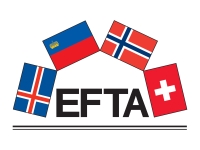Hlavní oblasti
- +Služby (0)
- +Stavebnictví (2)
- +Chemie a potravinářství (7)
- +Strojírenství (1)
- +Obecné normy (1)
- +Nekovové materiály (4)
- +Domácnost a volný čas (2)
- +Kovové materiály (0)
- +Zdraví, životní prostředí a zdravotní zařízení (1)
- +Doprava, mechanická manipulace a balení (14)
- +Obecné elektrotechnické normy (1)
- +Elektrotechnické inženýrství (6)
- +Elektrotechnika (6)
- +ICT, telekomunikace a nezařazené (0)
The purpose of this part of IEC 61300 is to describe the procedure required to measure the spring compression force of the coupling sleeve for rectangular ferrule multi-fibre connectors.
AMD
Amendment
This part of IEC 60068 demonstrates the adequacy of specimens to resist dynamic loads without unacceptable degradation of its functional and/or structural integrity when subjected to the specified random vibration test requirements.
Broadband random vibration may be used to identify accumulated stress effects and the resulting mechanical weakness and degradation in the specified performance. This information, in conjunction with the relevant specification, may be used to assess the acceptability of specimens.
This document is applicable to specimens which may be subjected to vibration of a stochastic nature resulting from transportation or operational environments, for example, in aircraft, space vehicles and land vehicles. It is primarily intended for unpackaged specimens, and for items in their transportation container when the latter may be considered as part of the specimen itself. However, if the item is packaged, then the item itself is referred to as a product and the item and its packaging together are referred to as a test specimen. This document may be used in conjunction with IEC 60068-2-47:2005, for testing packaged products.
If the specimens are subjected to vibration of a combination of random and deterministic nature resulting from transportation or real life environments, for example, in aircraft, space vehicles and for items in their transportation container, testing with pure random may not be sufficient. See IEC 60068-3-8:2003 for estimating the dynamic vibration environment of the specimen and based on that, selecting the appropriate test method.
Although primarily intended for electrotechnical specimens, this document is not restricted to them and may be used in other fields where desired (see Annex A).
This document incorporates data structures used by all other data domains of Transmodel. It is composed of the following data packages:
versions and validity;
responsibility;
generic framework;
reusable components;
explicit frames referring to generic data.
The data structures represented in this part are either generic patterns that can be explicitly reused in other domains (e.g., a generic model for version frames, a generic grouping mechanism, etc.) or are referenced by different other parts (e.g., service calendar model).
This document itself is composed of the following parts:
main document representing the data model for the concepts shared by the different domains covered by Transmodel (normative);
Annex A containing the data dictionary and attribute tables, i.e., the list of all the concepts present in the main document, together with their definitions (normative);
Annex B, indicating the data model evolutions (informative),
Annex C, presenting the Transmodel development history (informative),
Annex D, describing all conventions, methodology and notations for conceptual modelling (informative),
Annex E, providing a clear overview to help readers understand the core principles, structure, and purpose of Transmodel (informative),
Annex F, providing information on the Functional domains and Modes of operation (informative).
Annex G, providing details of the significant technical changes between this document and EN 12896-1:2015 (informative).
